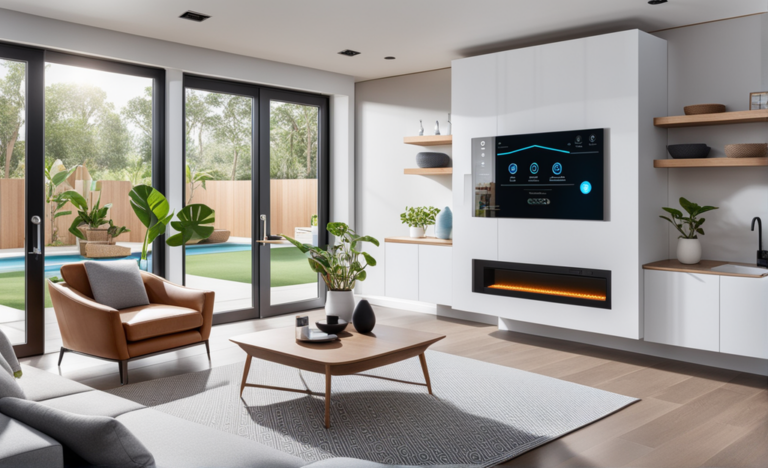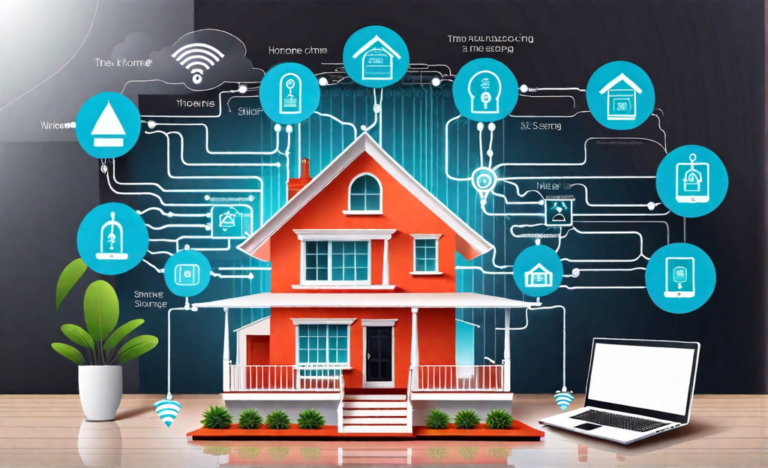How to set up a smart home for the blind
Smart home technology has the potential to empower the visually impaired by enhancing independence, safety, and accessibility. This step-by-step guide provides detailed instructions on how to set up a smart home to meet the unique needs of individuals with visual impairments. From choosing the right devices to configuring them for optimal use, this guide covers all aspects of creating a smart home that caters to the visually impaired.
Step 1: Assess Needs and Goals
- Determine Specific Needs: Begin by identifying the specific challenges and requirements of the visually impaired individual. This might include mobility, safety, convenience, and access to information.
- Set Clear Goals: Define what you want to achieve with your smart home. For example, you may aim to improve navigation, increase independence, or enhance safety.
Step 2: Choose the Right Smart Devices
- Voice Assistants: Select a voice assistant device like Amazon Echo (Alexa), Google Home (Google Assistant), or Apple HomePod (Siri) to serve as the central hub for controlling other devices. These devices offer voice-activated control and are compatible with a wide range of smart home products.
- Smart Lighting: Opt for smart lighting systems like Philips Hue or LIFX. These systems allow you to control lighting levels and colors through voice commands, making it easier to create well-lit environments.
- Smart Plugs and Outlets: Smart plugs, such as TP-Link Kasa, enable remote control of appliances. This is especially helpful for those with limited mobility, allowing them to turn devices on and off using voice commands.
- Smart Locks: Invest in a smart lock, such as August or Schlage, for keyless and remote entry. They offer greater security and ease of access.
- Thermostats: Choose a smart thermostat like the Nest Learning Thermostat to control heating and cooling through voice commands. It can be programmed and adjusted remotely for comfort and energy savings.
- Security Cameras: Install security cameras, like Ring or Arlo, for real-time monitoring and notifications. Many models have voice-activated features.
- Home Monitoring Systems: Explore smart home monitoring systems with sensors and alarms. Companies like BeClose and Notion offer solutions that can alert caregivers or the user to unusual activity.
- Voice-Activated Appliances: Some appliances, like the Instant Pot Smart WiFi, can be controlled through voice commands. This simplifies cooking and meal preparation.
- Voice-Controlled Entertainment: Opt for smart TVs with voice control features and screen-reading capabilities to ensure an accessible entertainment experience.
- Wearable Devices: Consider wearable devices like Fitbit or Apple Watch for tracking health and fitness. These can also provide alerts and notifications.
Step 3: Set Up Your Smart Home
- Configure Voice Assistant: Follow the manufacturer’s instructions to set up the chosen voice assistant. Connect it to your Wi-Fi network and calibrate its voice recognition to the user’s preferences.
- Sync Compatible Devices: Ensure all smart devices are compatible with the chosen voice assistant. Sync them to the voice assistant’s app and create groups or routines for easier control.
- Smart Lighting Setup: Install and configure smart light bulbs or switches. Group them by room or area for voice-activated control.
- Connect Smart Plugs: Set up smart plugs to control appliances. Assign each plug a distinct name for easy voice commands, such as “Turn on the coffee maker.”
- Configure Smart Lock: Install the smart lock according to the manufacturer’s instructions. Connect it to the voice assistant for remote control and voice-activated locking and unlocking.
- Set Thermostat Preferences: Configure the smart thermostat to your preferred temperature settings and schedules. Voice commands like “Set the temperature to 72 degrees” can be used to control it.
- Security Camera Installation: Install security cameras in key areas. Set up motion detection, alerts, and live streaming through the associated app or voice assistant.
- Home Monitoring Sensors: Place sensors in areas where monitoring is needed. Configure them to send alerts to the user or caregiver’s smartphone or to the voice assistant.
- Voice-Activated Appliances: Set up voice-activated appliances and configure them to respond to voice commands via the voice assistant.
- Smart TV and Entertainment: Connect the smart TV to your voice assistant and configure any accessibility features, such as screen readers and voice control.
- Wearable Devices: Sync wearable devices with the user’s smartphone and configure settings for notifications, health tracking, and accessibility features.
Step 4: Configure Accessibility Features
- Voice Assistant Skills: Explore voice assistant skills and enable those that are useful for the visually impaired. Skills may include news updates, audiobook playback, and accessibility features.
- Voice Commands: Teach the user essential voice commands for controlling devices, setting reminders, and accessing information.
- Accessibility Apps: Download and configure accessibility apps on smartphones, such as screen readers, magnifiers, and Braille learning apps.
- Braille Learning: If applicable, ensure that Braille learning tools and apps are installed and set up.
Step 5: Regular Maintenance and Training
- Regular Updates: Keep all smart devices, apps, and the voice assistant up to date with the latest software and firmware updates.
- User Training: Provide training to the visually impaired individual on using voice commands, configuring accessibility features, and operating smart devices.
- Family and Caregiver Training: Train family members and caregivers on how to assist with the smart home setup and troubleshoot any issues.
Step 6: Privacy and Security
- Data Privacy: Educate the user about data privacy and how to safeguard personal information when using voice assistants and smart devices.
- Security Measures: Set up strong passwords and enable security features on all devices to prevent unauthorized access.
Step 7: Seek Support and Resources
- Support Communities: Connect with online support communities and forums for advice, tips, and troubleshooting assistance.
- Accessibility Programs: Explore government or non-profit programs that provide accessibility technology support and resources.
With the right devices, proper setup, and ongoing training, a smart home can significantly enhance the quality of life, independence, and accessibility for individuals with visual impairments.






